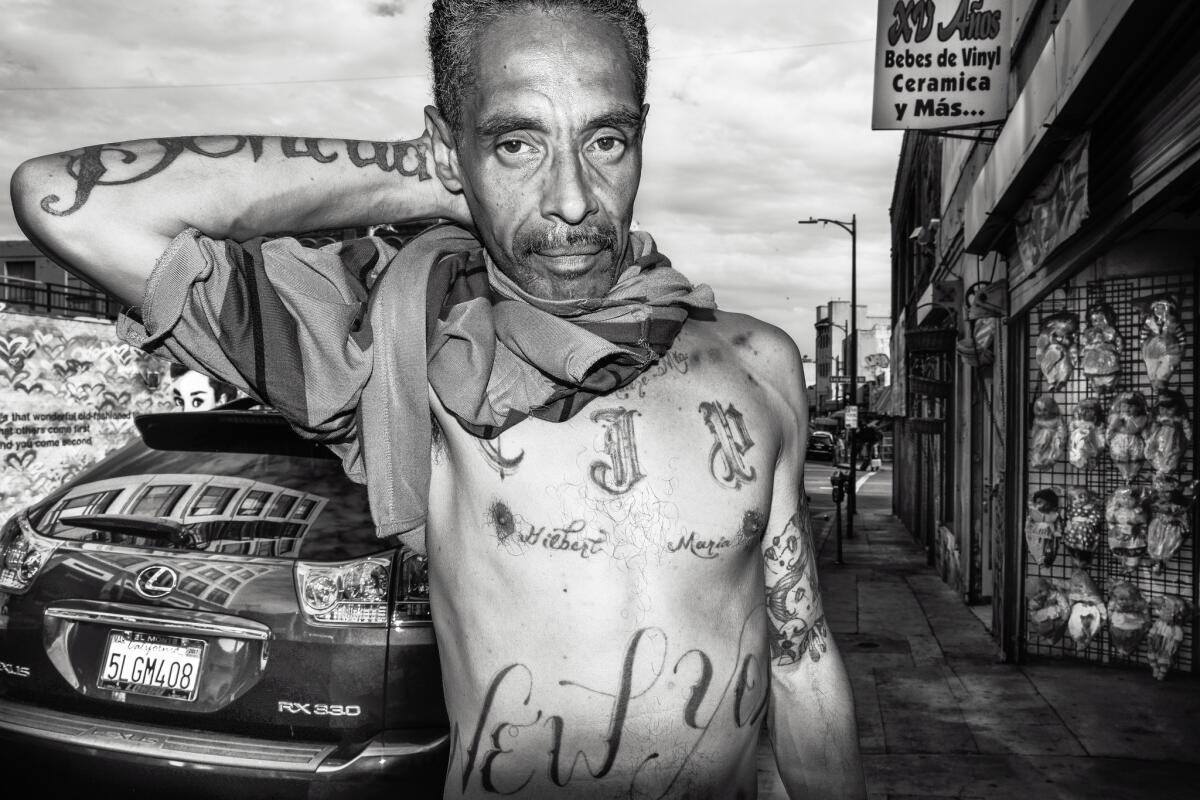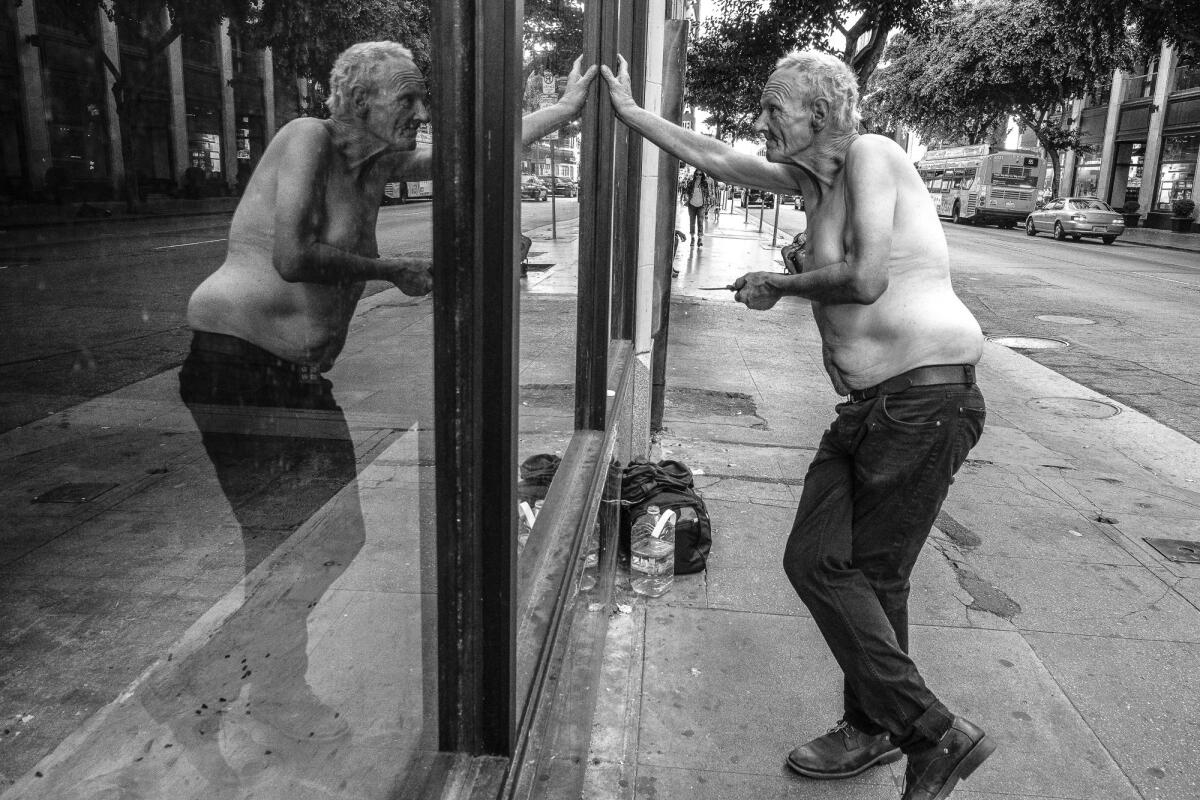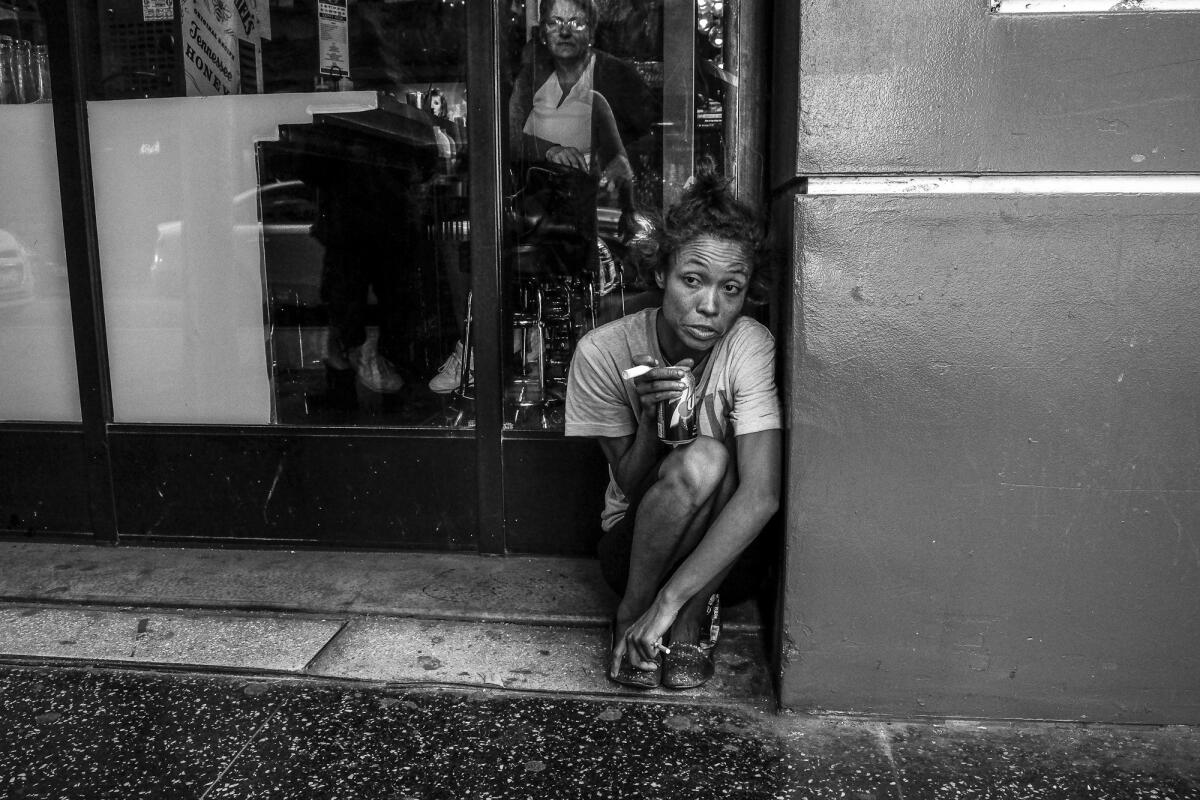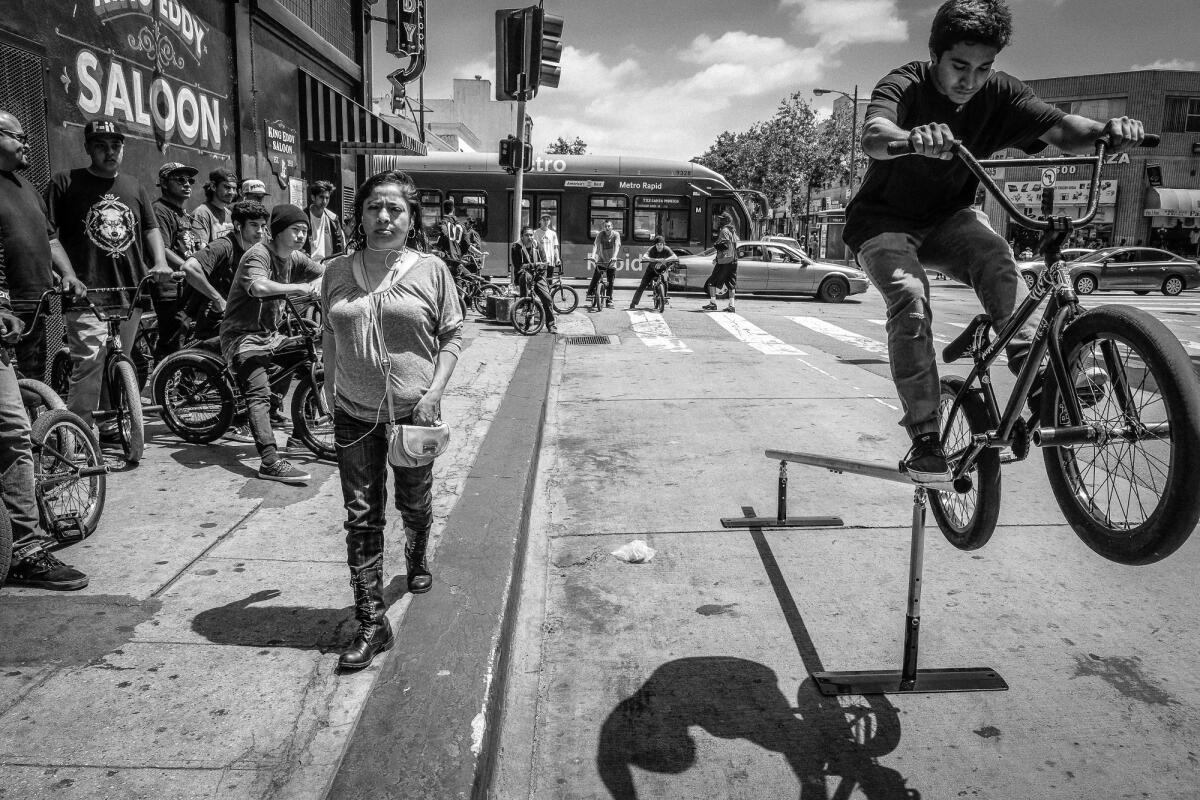Photographer Suzanne Stein discusses her work documenting downtown L.A.
- Share via
Suzanne Stein is a figurative artist-turned-photographer who has recently been documenting downtown Los Angeles. As a single parent, she has faced many challenges and has decided to focus on those who live in “precarious circumstances.” Her idea is to photograph her subjects in a “narrative style that brings the reality of life forward in an uncompromising and straightforward manner.”
She recently agreed to discuss her work and her influences:
Q: Who influences your photography, and how did you develop your style?
A: I started taking pictures without having first studied photography or photographers. My style evolved as I became more and more captivated by Downtown Los Angeles, as my response to the grit and realism I found there. Helen Levitt is probably in the back of my mind, and I love Bruce Davidson and Henri Huet. W. Eugene Smith’s images from his essay “Minimata” are some of the most memorable images ever made in my estimation.

Q: How do you communicate with the people you photograph?
A: I just start talking! Or they start talking — it’s hard to pinpoint. I find that in many cases people have a need to talk and express themselves, and being photographed, in some instances, is a very unique and noteworthy experience. I think that interaction is what makes it special for me as well ... and it allows for me to form an image that expresses the person or situation in a way that accurately reflects their circumstances.
Q: What is your goal within the medium?
A: I want many people to see aspects of the world from my perspective. I want very much to have the privilege of creating a window for others to view scenes and people that exist in places that are often ignored or treated dismissively. I am intensely motivated by inequality and the untenable situations that people with mental disabilities face every day and that are not adequately or realistically expressed. Photography is ubiquitous these days — iPhones and apps have changed the art form forever. But … there’s still a tremendous need for strong narrative within an image in a world that is moving forward at light speed and leaving many people out, far behind the curve. I hope to find the ability to create images that have the power to bridge gaps between people, and have them seen.

Q: How did you initially get into photography?
A: I was on a trip to Europe and began taking iPhone pictures. Very quickly it became an obsession as I began to realize the power of the medium, and the unlimited potential of creating pictures from real life.
Q: What are your challenges doing this kind of work and how do you overcome them?
A: I am sometimes afraid of losing my camera equipment, unfortunately! I’ve been assaulted on several occasions, once I had a mild concussion. I’ve been kicked and had some brutally difficult interactions with people. Photographing people who are disabled and in a state of powerless disarray can be very difficult for me emotionally and always has the potential to cloud my views of ordinary life. Making pictures comes from within, and the difficulty that the commercial aspects of photography presents can be very discouraging, especially with images that are not pretty and present a raw and unfiltered realism.


Q: What have you learned about yourself doing this work?
A: I have learned that I’m a good person … but not always a nice person. I have discovered that, no matter your level of sensitivity or personal enlightenment, it takes a certain level of callousness for any photographer to make pictures of people in dire circumstances. I realized that I am a very selfish person in some regards because I will stop at almost nothing to create images that have meaning to me, and that’s not exactly virtuous.


Q: Do you have any advice for beginning photographers?
A: Take pictures even when you don’t feel like it. Take them when you’re tired, when you’re depressed, when you’re hungry or bored or otherwise unmotivated. Push through your sad times and don’t give up. I’ve actually gotten some of my best pictures on my worst days. Be inspired by the work of other photographers, but never consciously seek to copy people. Be wary of the influence and power of social-media likes and comments. Don’t be afraid to ask for help.
Her work can be found at suzannesteinphoto.com.